The Vietnam News Agency’s war correspondents have lived through the heroic years with the fate of the country. They have lived and fought as true soldiers holding pens in battle, as witnesses to historical moments and the sacrifices and losses of their compatriots. They have also experienced hardships and dangers under the enemy’s bombs and bullets.
Generations of war correspondents like journalist Tran Mai Huong and journalist Le Cuong had to push aside their pain and move on many times when they witnessed their colleagues falling in the fierce trenches with "cameras and weapons in hand and unfinished news pages" and then engraved in their hearts the images of those immortal monuments.
They, on the long journey of fire and flowers, sometimes had to put aside their personal feelings at the unexpected moment of meeting their loved ones to closely follow every development on the front line, promptly writing "epic songs" to convey news to Hanoi, spreading it to the world . And, there were special reunions at the historic moment of the Great Victory of Spring 1975 that left many emotions and impressions until now...
The journey of "going to return"
Fifty years after the Liberation of the South and the reunification of the country, war correspondent Tran Mai Huong now has white hair and freckled skin. Former General Director of Vietnam News Agency, at the age of U80, his voice is still full of enthusiasm when recalling the historic years.
Sharing with the younger generation of VietnamPlus Electronic Newspaper about the moment he was present at the Independence Palace at noon on April 30, 1975 with his colleagues on the day of total victory, he said that it was the most wonderful memory in his life as a war correspondent.
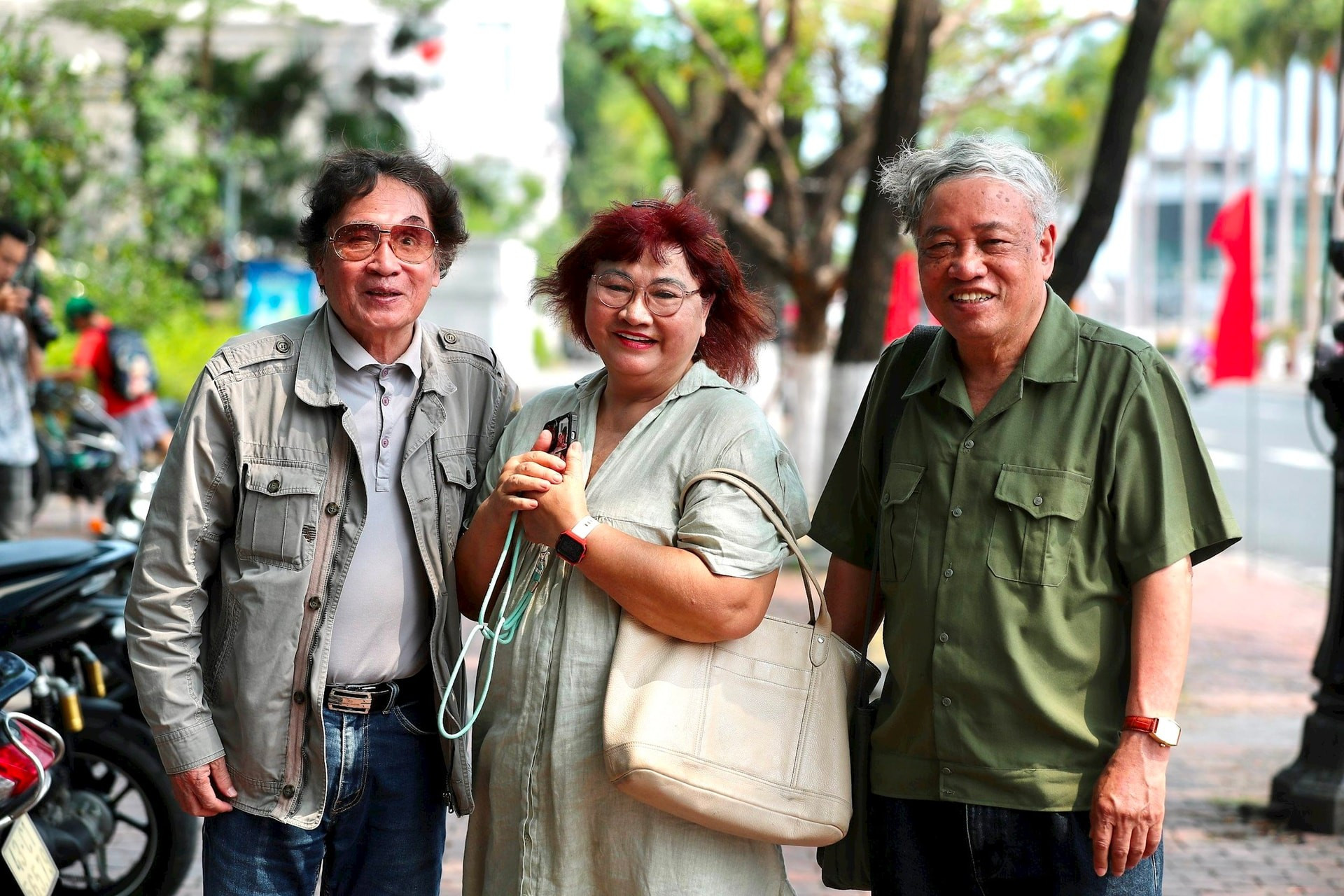
What was more special was that on that day, although coming from two directions, following two armies, he and his brother, journalist Tran Mai Hanh, were present at the Independence Palace to report on the historical event of the nation.
Journalist Tran Mai Hanh was the first to report on the victory at the Independence Palace with the work “ Ho Chi Minh City shining with yellow stars,” while his younger brother, journalist Tran Mai Huong, took the photo “Liberation Army tanks entering the Independence Palace at noon on April 30, 1975.”
Two brothers, two war correspondents of the Vietnam News Agency, had created lifelong journalistic works associated with the milestones of the nation. At the moment of that special mission, they cried silently. Tears of happiness and pride.
Before that, on March 25, 1975, after the liberation of Hue, the war correspondents of the Vietnam News Agency in Hue gathered to receive their assignments from their superiors. Unexpectedly, the two brothers Tran Mai Hanh and Tran Mai Huong had the chance to meet. But due to the short time, they could only look at each other, their eyes stinging.
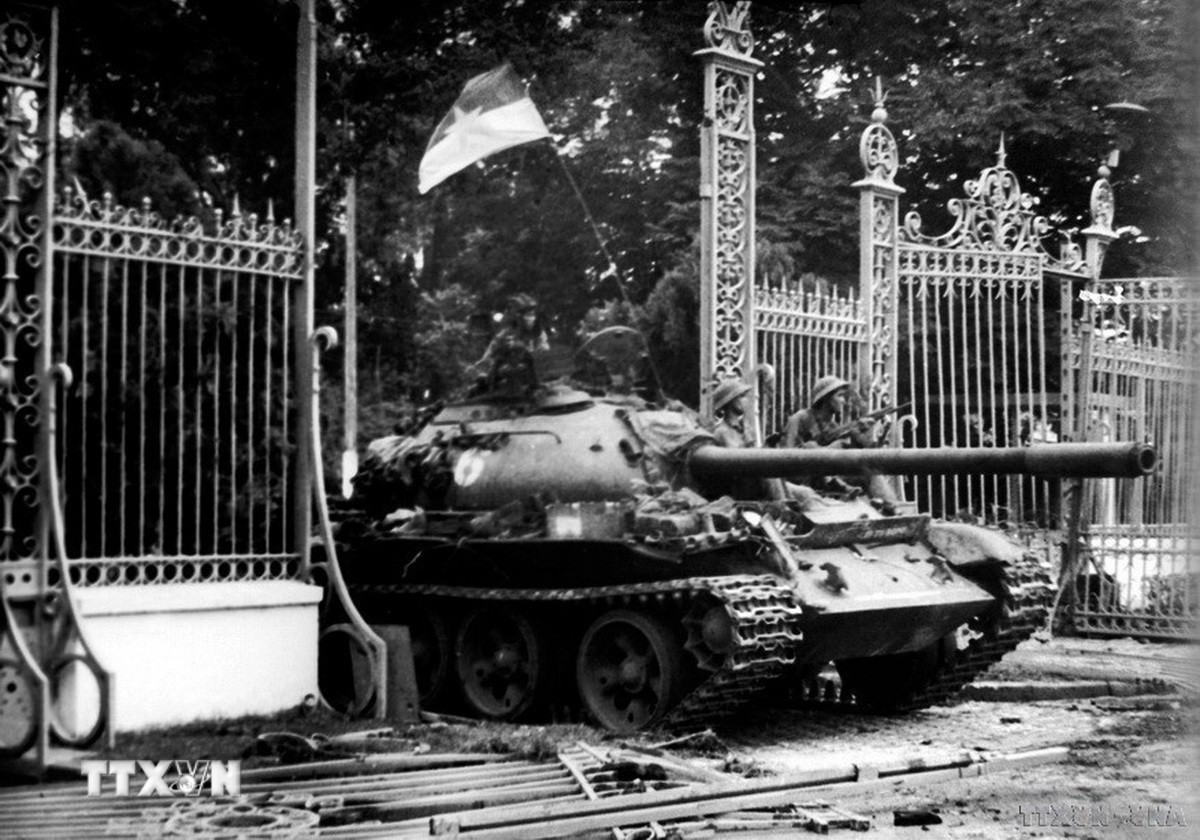
The ideas formed from this unique historical moment later helped journalist Tran Mai Hanh write “War Record 1-2-3-4.75,” a work that was awarded the highest prize of the Vietnam Writers Association and the ASEAN Literature Award. Meanwhile, the image of “Liberation Army tanks entering the Independence Palace at noon on April 30, 1975” taken by journalist Tran Mai Huong has been widely used to this day as a symbol of the historic Great Victory of Spring 1975.
Hard work, hardship, marching with the army and working amidst countless difficulties and dangers, but at the same time ensuring the timeliness of the news, that is all the luggage of a war correspondent like journalist Tran Mai Huong. He said that after finishing his work in those days, he had to immediately set out on the road, traveling dozens of kilometers, wading through rivers and forests to the radio station to broadcast the news to the capital.
Calmly facing the worst situations while working on the battlefield, journalist Tran Mai Huong said that many times he mentally prepared himself by taking a piece of paper with his name written on it, wrapping it in plastic and putting it in his shirt pocket, fastening it with a safety pin so that in case of a bomb or stray bullet, everyone would know who he was.
More than ten years as a war reporter helped him forge the qualities, personality, and courage to serve his journalism work and become a manager later.
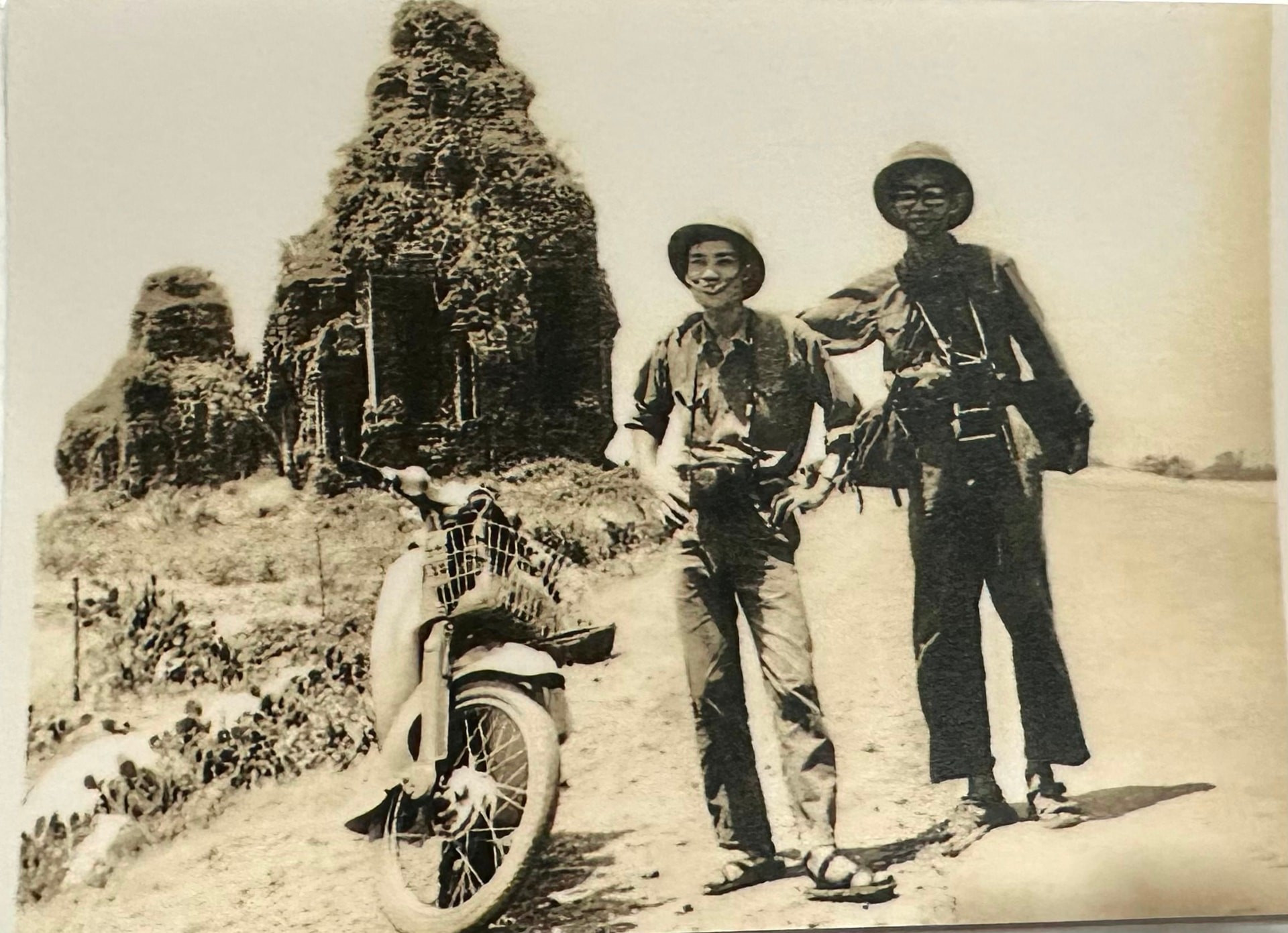
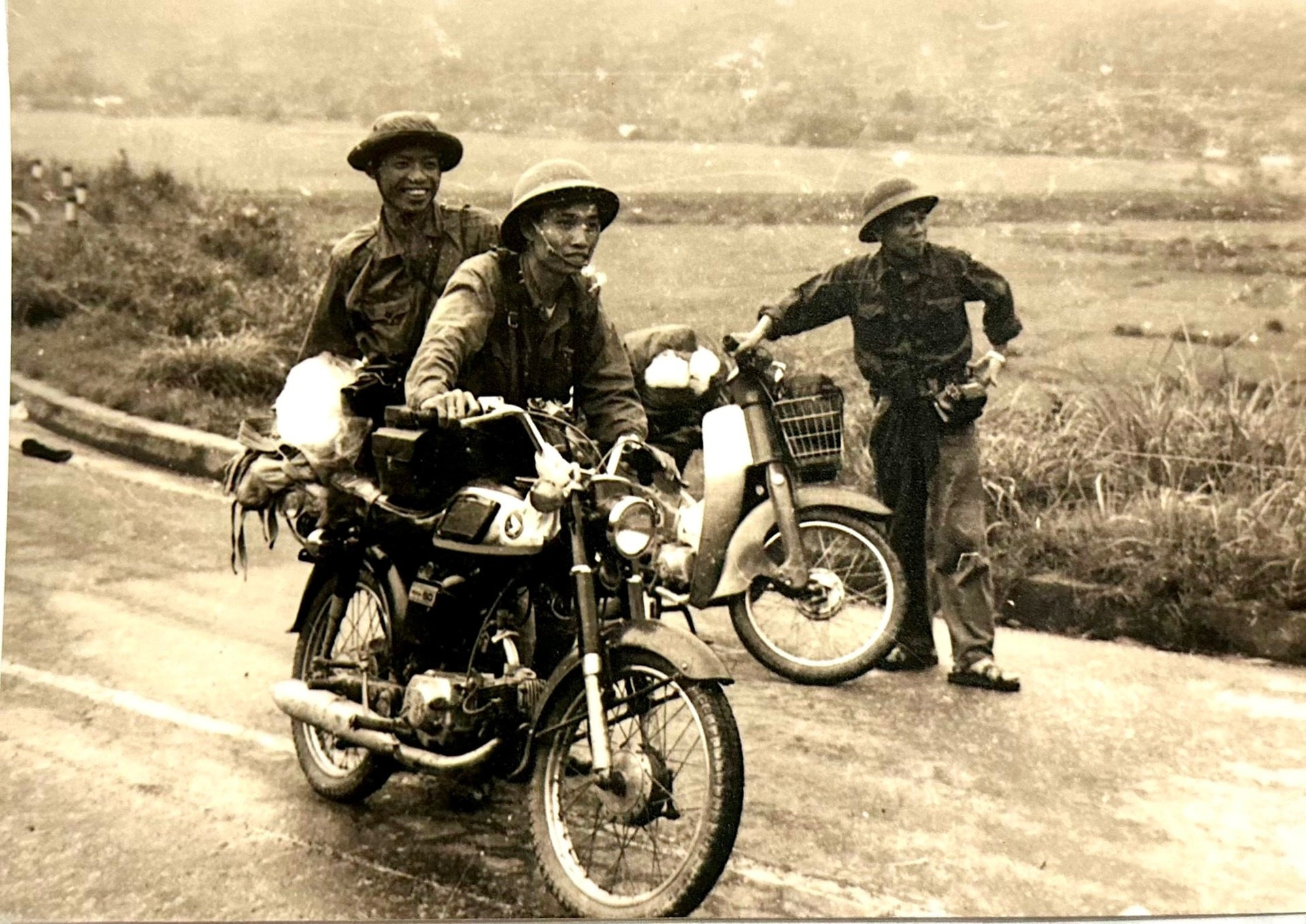
Time has passed, but youth and the heroic memories of the past remain forever. In 2024, two journalist brothers Tran Mai Huong and Tran Mai Hanh took each other by the hand to "take the train" to find the old battlefields, along the length of the country.

“A trip I have wanted to take for a long time. We crossed the 17th parallel, Hien Luong bridge, Ben Hai river - where the country was once divided; through Hue, Da Nang, Quang Nam, Quang Ngai, Binh Dinh, Phu Yen then to Nha Trang, Phan Rang, Phan Thiet, through Xuan Loc - Dong Nai to Saigon - Ho Chi Minh City,” journalist Tran Mai Huong shared on Vietnamplus Electronic Newspaper about the origin of the special trip with her brother.
That journey to return, fulfilled the wishes of the people involved. Because right at the time of setting foot in Saigon, the historical land associated with unforgettable days, journalist Tran Mai Hanh suddenly passed away...
Dreamlike story in the middle of the campaign
The chaos of war has torn apart many Vietnamese families, and the family of reporter Le Cuong is no exception. Graduating from the GP10 course of VNA, the young man Le Cuong officially became a war photojournalist of the News Agency army.
Receiving the assignment, the young reporter followed the Truong Son trail through the forest, climbed passes, waded through streams under the fierce bombardment of enemy aircraft, including B52s, day and night, while his younger brother Le Van Cuong passed the university entrance exam and lived at home with his mother. At that time, only people at the front line could send letters to the rear, so news from home was almost interrupted.
“However, by chance, after the Year of the Tiger (1974), during a trip to the Southwest front, at the first liaison station, I received news that my younger brother Cuong had joined the army in May 1973, crossed Truong Son in October 1973 and also returned to the Southwest front in the 1st Regiment of the main force, which was mostly young men from Hanoi. After receiving the news, I tried to find out news about him, but there was little hope of meeting him because the army moved secretly,” journalist Le Cuong recalled.
That day, the Liberation News Agency photojournalist group that he was a part of was reinforcing the Southwest region, and had to go to the base of region 9, located in the U Minh Ha forest, Ca Mau. On this trip, after a month of rest and training, the group of reporters including Phung Dang Bach, Mac Phuong Hung and Le Cuong were assigned to Tra Vinh, the furthest area because they had to go back up.
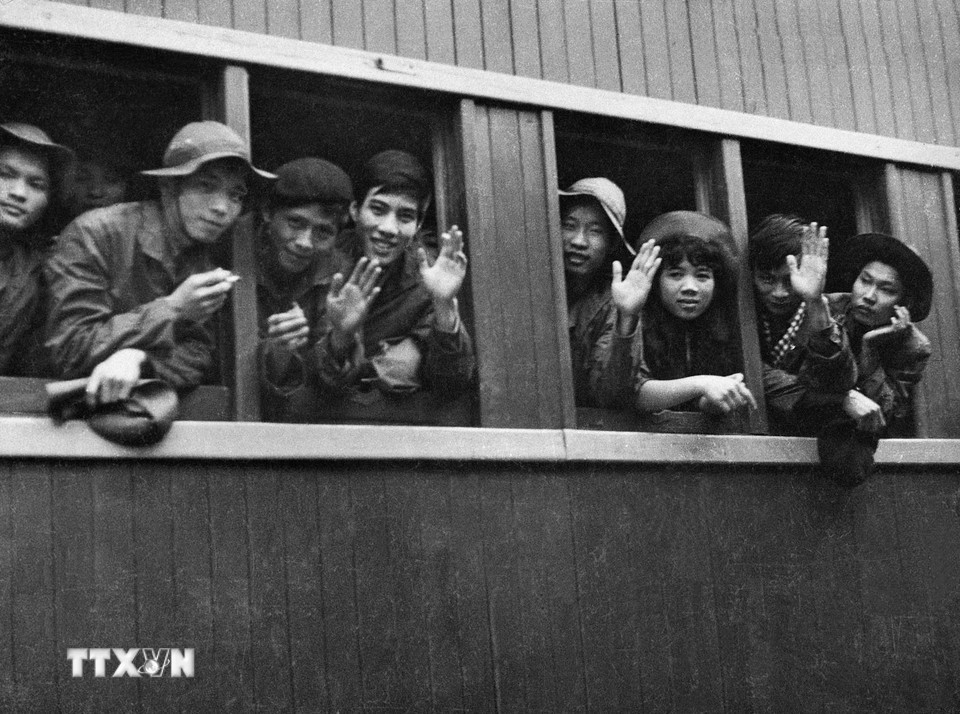
The local army and guerrillas were quite strong, causing the enemy to cluster in the outposts of the sub-regions (administrative-military units of the Saigon government before 1975, equivalent to districts) and sub-regions (communes). In October 1974, upon receiving news that Regiment 1 was stationed in Tieu Can, journalist Le Cuong immediately went there, hoping to meet his younger brother.
Following the liaison from the provincial party committee base in Tap Ngai, Tieu Can district, he set off in the early evening, then got into a boat and rowed along the garden, across the green rice fields, still submerged in water. He did not even know which hamlet or village it was.
After more than 3 hours of wandering, we arrived at the station. It was a hut built from rough wood in the middle of a deserted garden. The older brother searched the whole neighborhood in the pitch black night, and finally found his unit, thanks to accidentally hearing the 'signs' of his own habits.
Journalist Le Cuong recalled: “In the hut, everyone was sleeping, and I suddenly heard the sound of cracking fingers ‘Ro...op, ro...op’ twice in the next curtain. A flash of memory came back and made me jump, was this Cuong? His fingers were thin and long, different from mine. I remember when I was at home, the way he cracked his fingers loudly from his index finger to his little finger always made my mother scold him for fear of damaging his hand.”
“Hearing the familiar sign, I asked, 'Is this Tien? (Cuong's nickname at home)/ Is that Cuong? My brother and I both exclaimed, 'Oh my god', then threw open the curtain, hugged each other, shined flashlights on each other's faces, and chatted about everything. It had only been a year since we'd been apart, but so many things had happened. We both talked a lot about our mother, and now, by chance, we found each other, meeting each other as if in a dream. Then the next day, each of us continued on our separate paths of war.”
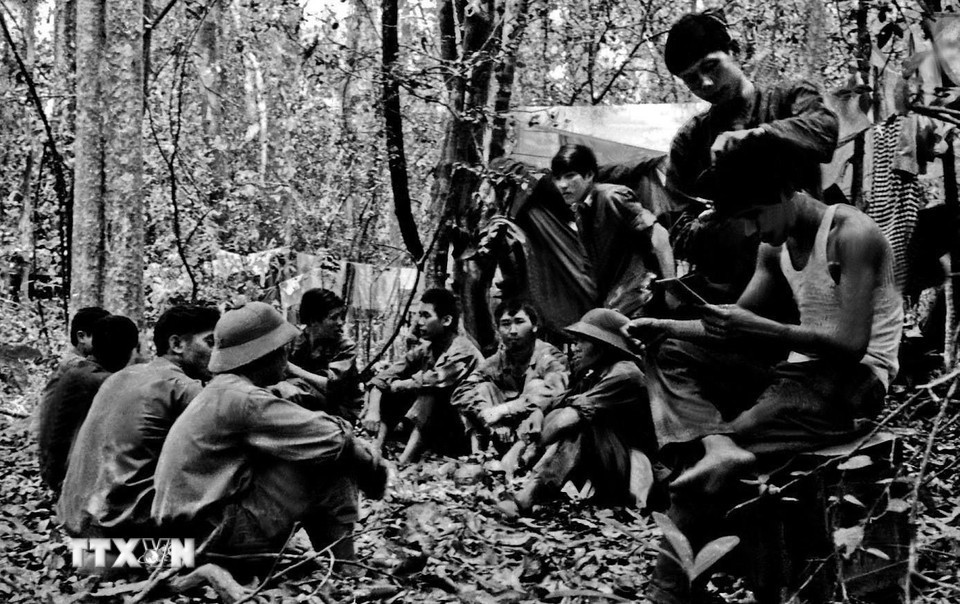
Journalist Le Cuong said his younger brother followed his mother's advice and went to the South to find him, take a photo of them together and send it to his mother. His mother did not know where to find him in the midst of bombs and bullets of war, but she still wished for it. And finally, her wish came true with a photo capturing the happiest smile of the two brothers' reunion on the battlefield.
The next day, the liaison station he had left the night before was hit by a series of bombs. Journalist Le Cuong remained in Tra Vinh while his younger brother followed his unit to the front lines in Vinh Long. During this time, the two brothers lost all contact.
Then, during the 1975 Spring Campaign General Offensive, journalist Le Cuong followed the provincial armed forces to liberate Tra Vinh town at the same time as Saigon at 12:30 on April 30.
“On May 15, 1975, I jumped for joy when I saw my younger brother holding an AK walking among the troops parading in Vinh Long town during the Victory Celebration. The Americans had left, the puppets had fallen,” journalist Le Cuong recalled.
And then, the photo of the two brothers taken that day with bright smiles is still hung in the family living room in Hanoi. That smile has forever preserved the touching moment of meeting during a chaotic war time.
“My younger brother later became an engineer working in the construction industry in Hanoi, and then passed away in 2006 due to a serious illness. My mother is now 92 years old, and every time she looks at the photo, she tells her grandchildren and great-grandchildren about the meeting between her two sons in the past…” journalist Le Cuong said emotionally./.
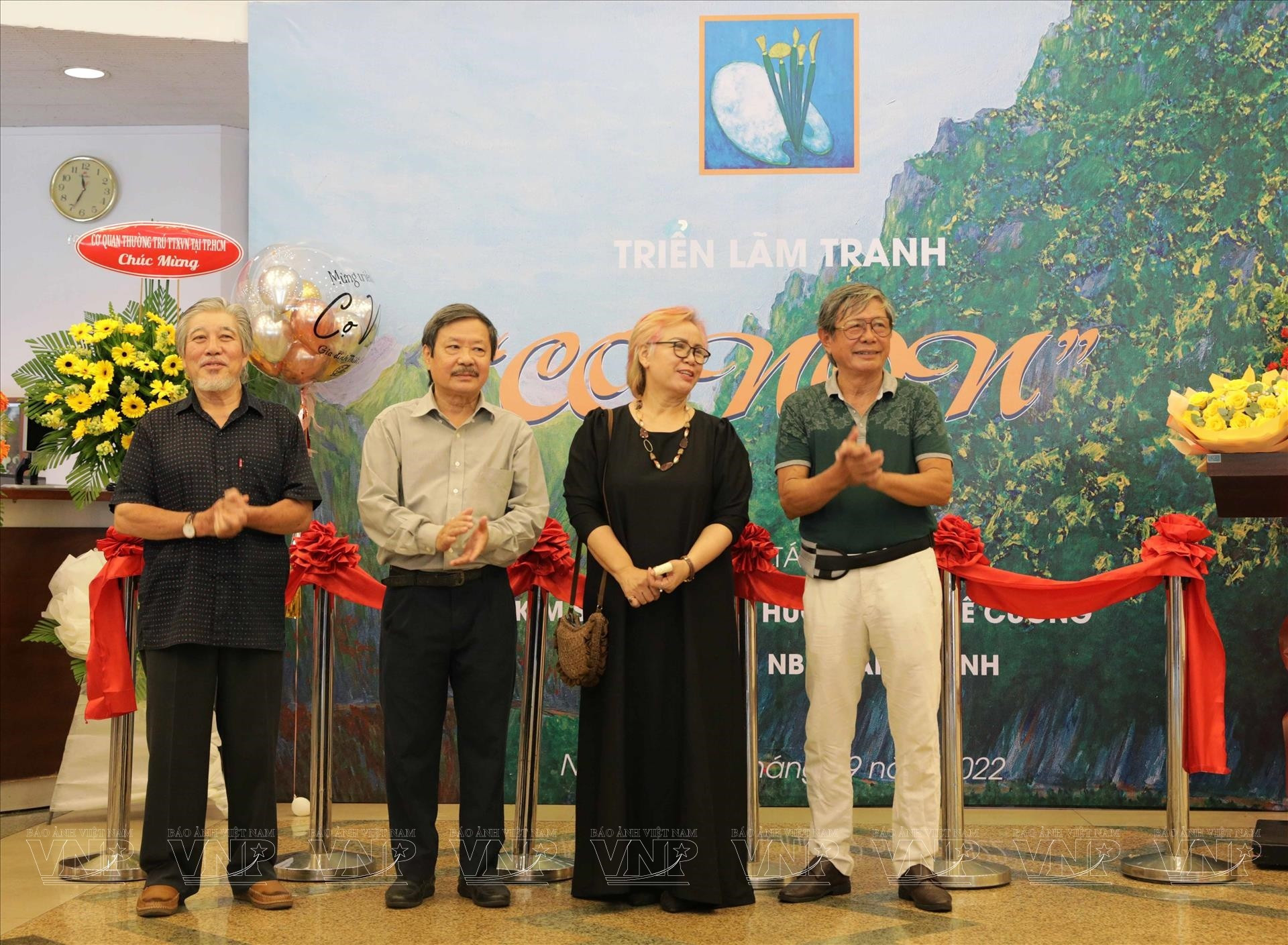
Source: https://www.vietnamplus.vn/phong-vien-chien-truong-ttxvn-tu-hao-ban-hung-ca-mot-thoi-hoa-lua-post1035273.vnp


![[Photo] Prime Minister Pham Minh Chinh receives Rabbi Yoav Ben Tzur, Israeli Minister of Labor](https://vphoto.vietnam.vn/thumb/1200x675/vietnam/resource/IMAGE/2025/5/21/511bf6664512413ca5a275cbf3fb2f65)
![[Photo] Prime Minister Pham Minh Chinh attends the groundbreaking ceremony of Trump International Hung Yen Project](https://vphoto.vietnam.vn/thumb/1200x675/vietnam/resource/IMAGE/2025/5/21/ca84b87a74da4cddb2992a86966284cf)
![[Photo] Scientific workshop "Building a socialist model associated with socialist people in Hai Phong city in the period of 2025-2030 and the following years"](https://vphoto.vietnam.vn/thumb/1200x675/vietnam/resource/IMAGE/2025/5/21/5098e06c813243b1bf5670f9dc20ad0a)
![[Photo] Determining the pairs in the team semi-finals of the National Table Tennis Championship of Nhan Dan Newspaper](https://vphoto.vietnam.vn/thumb/1200x675/vietnam/resource/IMAGE/2025/5/21/eacbf7ae6a59497e9ae5da8e63d227bf)


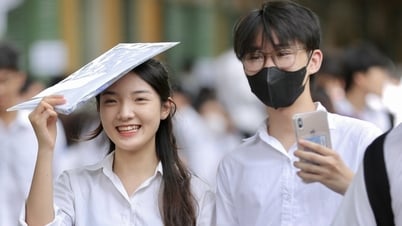

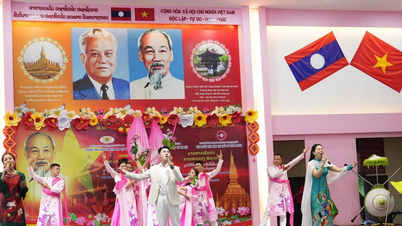
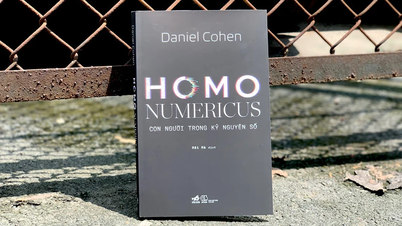

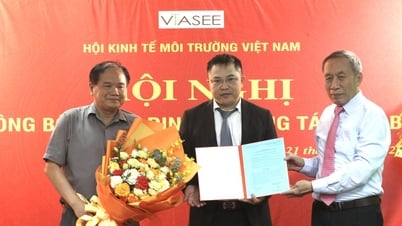
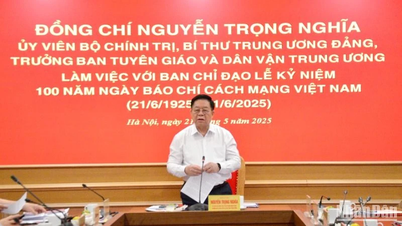
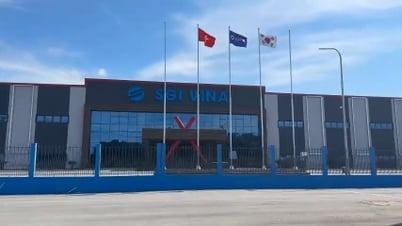




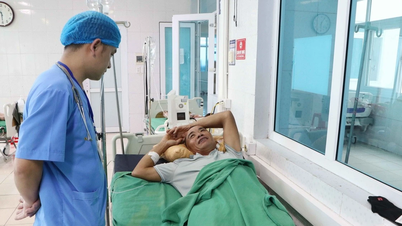
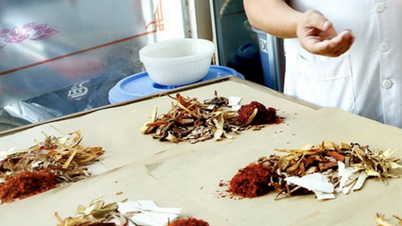
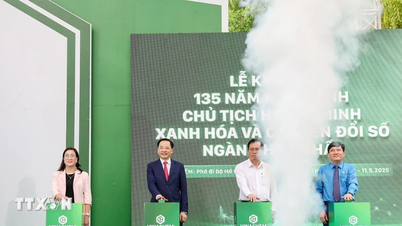
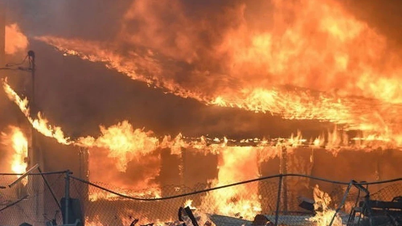
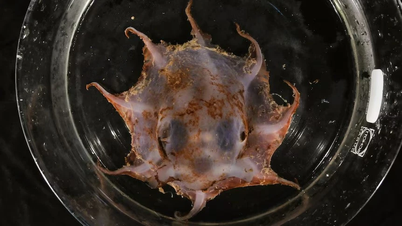










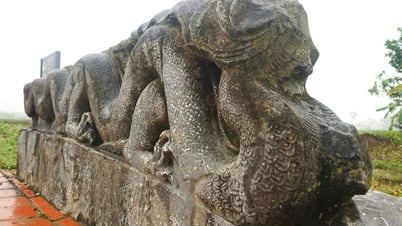






















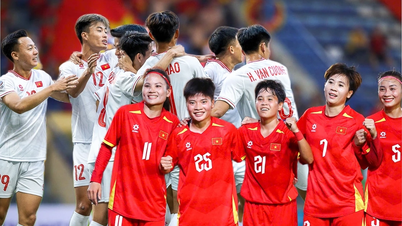

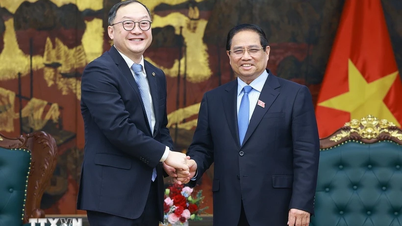


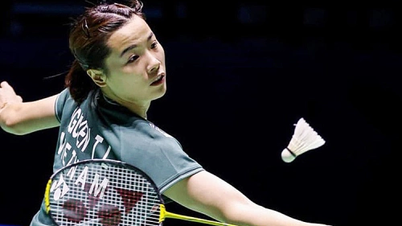

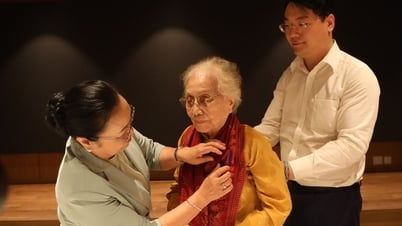


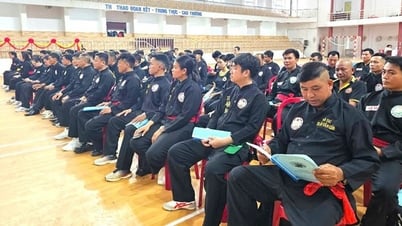
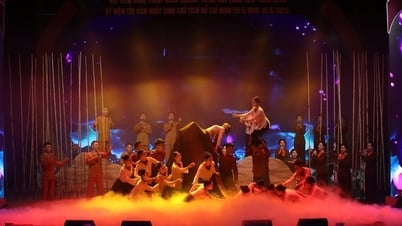


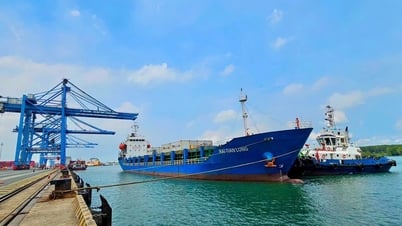



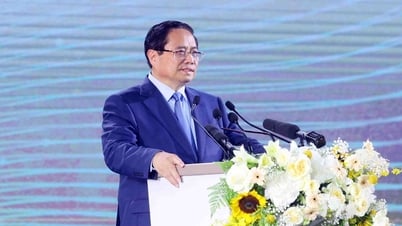

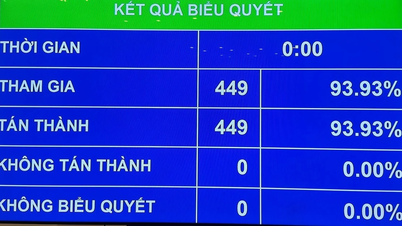

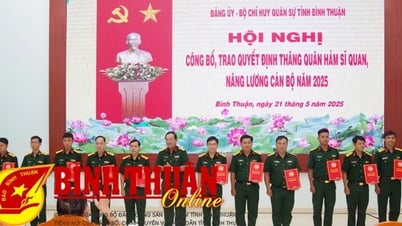

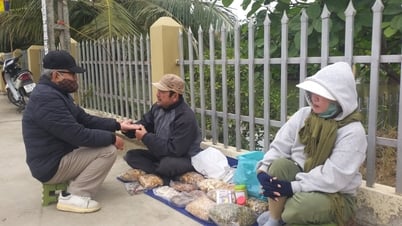












Comment (0)